-
 bitcoin
bitcoin $122025.899241 USD
-2.12% -
 ethereum
ethereum $4488.068729 USD
-4.11% -
 bnb
bnb $1315.348019 USD
8.65% -
 tether
tether $1.000457 USD
0.03% -
 xrp
xrp $2.875326 USD
-3.69% -
 solana
solana $222.043604 USD
-4.07% -
 usd-coin
usd-coin $0.999682 USD
0.00% -
 dogecoin
dogecoin $0.249887 USD
-5.62% -
 tron
tron $0.337379 USD
-2.59% -
 cardano
cardano $0.827763 USD
-5.06% -
 hyperliquid
hyperliquid $45.774531 USD
-2.43% -
 chainlink
chainlink $22.079309 USD
-5.87% -
 ethena-usde
ethena-usde $1.000156 USD
0.02% -
 sui
sui $3.482566 USD
-3.57% -
 stellar
stellar $0.386982 USD
-4.92%
What is the difference between DeFi and traditional finance?
DeFi's decentralized structure provides direct asset control and transparency through public blockchains, while traditional finance relies on intermediaries and opaque transactions.
Feb 17, 2025 at 06:25 pm
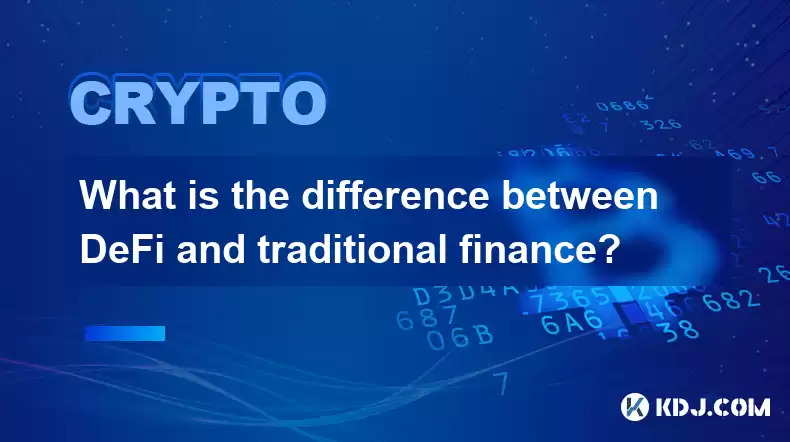
- Decentralization and Centralization: DeFi operates on blockchain networks, eliminating intermediaries and providing users with direct control over their assets. Traditional finance, on the other hand, relies on centralized entities such as banks and financial institutions to facilitate transactions.
- Transparency and Privacy: DeFi transactions are recorded on public blockchains, making them transparent and verifiable by all participants. Traditional finance often involves closed-door transactions and limited access to information for customers.
- Innovation and Accessibility: DeFi embraces constant innovation, enabling the development of new financial products and services that are not possible in traditional finance. It also lowers barriers to entry and provides greater accessibility to financial markets for individuals and organizations.
- Risk and Regulation: DeFi carries inherent risks due to its decentralized and unregulated nature. Traditional finance is subject to comprehensive regulations and oversight, providing some level of protection and stability.
- DeFi: DeFi operates on distributed ledger technology (blockchain), where financial transactions are processed and recorded across a network of computers, eliminating the need for central intermediaries such as banks or clearinghouses. This decentralized architecture empowers users with full control over their assets, as they interact directly with smart contracts and protocols on the blockchain.
- Traditional Finance: Traditional finance is heavily reliant on centralized entities, such as banks, brokerage firms, and other financial institutions, to facilitate transactions and manage financial operations. These entities act as intermediaries, holding and controlling customers' assets while managing financial processes. Centralization introduces layers of bureaucracy, decision-making authority, and potential points of failure.
- DeFi: DeFi transactions are immutably recorded on public blockchains, ensuring a high level of transparency. All transactions are visible and verifiable by anyone with access to the blockchain, allowing for greater accountability and reduced opportunities for fraud. However, this transparency also impacts privacy, as all activity on the blockchain is publicly viewable, making it difficult to maintain complete financial anonymity.
- Traditional Finance: Transactions in traditional finance are often conducted through closed-door negotiations and private agreements between financial institutions and their clients. This opacity can provide some level of privacy, but it also creates opportunities for misconduct, conflicts of interest, and a lack of accountability.
- DeFi: DeFi fosters innovation by leveraging the open-source nature of blockchain technology. Developers can create new financial products and services, such as decentralized exchanges, lending platforms, and derivatives, that are not possible within traditional finance. This constant innovation brings about fresh perspectives, increased competition, and the potential for enhanced financial efficiency. DeFi also lowers barriers to entry, allowing individuals and organizations to participate in financial markets without traditional gatekeepers.
- Traditional Finance: Innovation in traditional finance is often stifled by regulatory constraints and established legacy systems. This can limit the development of new financial products and services. Traditional finance often requires individuals and organizations to meet specific eligibility criteria or have significant capital to participate in certain markets.
- DeFi: Due to its decentralized and unregulated nature, DeFi carries inherent risks for users. There is no central authority to enforce compliance or provide protection against fraud, hacks, or protocol vulnerabilities. Users need to conduct extensive research and exercise caution when engaging in DeFi activities.
- Traditional Finance: Traditional finance is subject to comprehensive regulations and oversight by government agencies and central banks. These regulations aim to protect consumers, ensure market stability, and prevent financial crimes. While not foolproof, regulations provide a level of protection and confidence for participants in traditional financial markets.
Disclaimer:info@kdj.com
The information provided is not trading advice. kdj.com does not assume any responsibility for any investments made based on the information provided in this article. Cryptocurrencies are highly volatile and it is highly recommended that you invest with caution after thorough research!
If you believe that the content used on this website infringes your copyright, please contact us immediately (info@kdj.com) and we will delete it promptly.
- BlockDAG, DOGE, HYPE Sponsorship: Crypto Trends Shaping 2025
- 2025-10-01 00:25:13
- Deutsche Börse and Circle: A StableCoin Adoption Powerhouse in Europe
- 2025-10-01 00:25:13
- BlockDAG's Presale Buzz: Is It the Crypto to Watch in October 2025?
- 2025-10-01 00:30:13
- Bitcoin, Crypto, and IQ: When Genius Meets Digital Gold?
- 2025-10-01 00:30:13
- Stablecoins, American Innovation, and Wallet Tokens: The Next Frontier
- 2025-10-01 00:35:12
- NBU, Coins, and Crypto in Ukraine: A New Yorker's Take
- 2025-10-01 00:45:14
Related knowledge

How to track DeFi activity on a block explorer
Sep 04,2025 at 05:36pm
Bitcoin's Role in Decentralized Finance1. Bitcoin remains the cornerstone of the cryptocurrency ecosystem, serving as both a store of value and a benc...
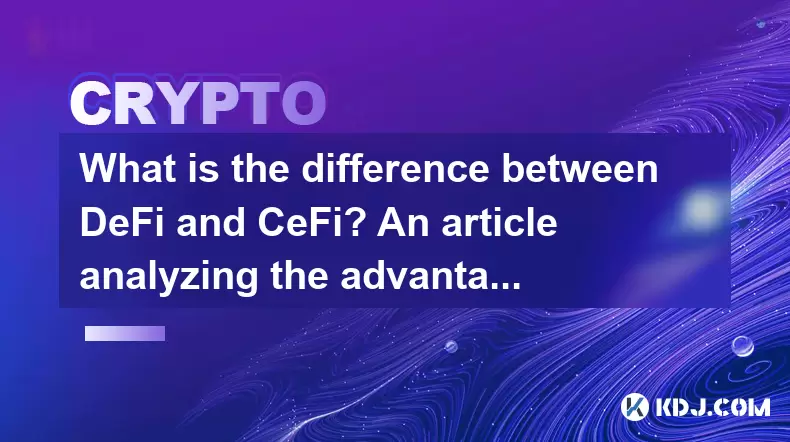
What is the difference between DeFi and CeFi? An article analyzing the advantages and disadvantages of both
Jun 13,2025 at 03:57am
Understanding the Foundations of DeFi and CeFiTo fully grasp the difference between DeFi (Decentralized Finance) and CeFi (Centralized Finance), it’s ...
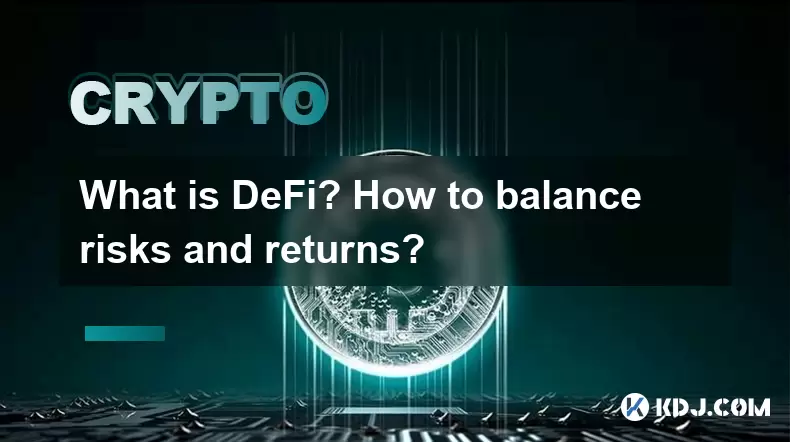
What is DeFi? How to balance risks and returns?
May 31,2025 at 12:22pm
What is DeFi? How to Balance Risks and Returns? Decentralized Finance, commonly known as DeFi, represents a revolutionary shift in the financial ecosy...
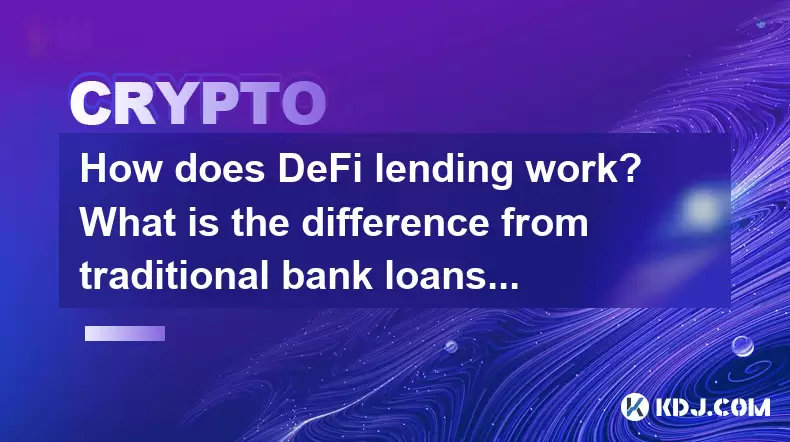
How does DeFi lending work? What is the difference from traditional bank loans?
May 29,2025 at 05:36pm
Introduction to DeFi LendingDeFi lending, or decentralized finance lending, represents a revolutionary shift in the way borrowing and lending are cond...
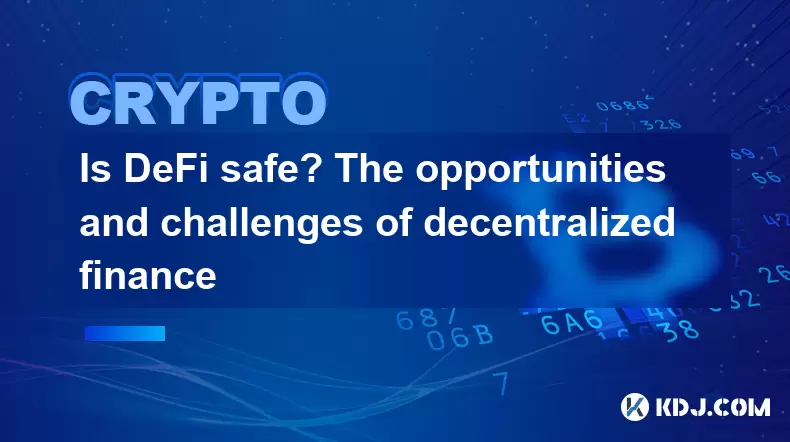
Is DeFi safe? The opportunities and challenges of decentralized finance
May 27,2025 at 02:28pm
Decentralized Finance, commonly known as DeFi, has revolutionized the financial landscape by offering a range of financial services without the need f...
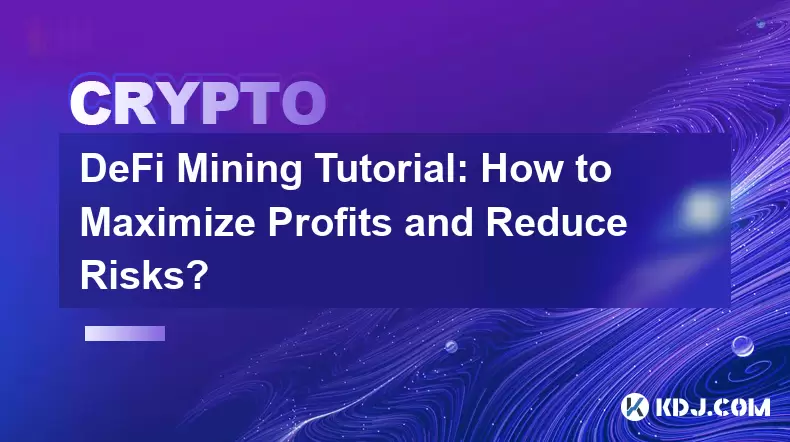
DeFi Mining Tutorial: How to Maximize Profits and Reduce Risks?
May 27,2025 at 07:42am
DeFi, or Decentralized Finance, has opened up a new world of opportunities for crypto enthusiasts looking to maximize their profits through various mi...

How to track DeFi activity on a block explorer
Sep 04,2025 at 05:36pm
Bitcoin's Role in Decentralized Finance1. Bitcoin remains the cornerstone of the cryptocurrency ecosystem, serving as both a store of value and a benc...

What is the difference between DeFi and CeFi? An article analyzing the advantages and disadvantages of both
Jun 13,2025 at 03:57am
Understanding the Foundations of DeFi and CeFiTo fully grasp the difference between DeFi (Decentralized Finance) and CeFi (Centralized Finance), it’s ...

What is DeFi? How to balance risks and returns?
May 31,2025 at 12:22pm
What is DeFi? How to Balance Risks and Returns? Decentralized Finance, commonly known as DeFi, represents a revolutionary shift in the financial ecosy...

How does DeFi lending work? What is the difference from traditional bank loans?
May 29,2025 at 05:36pm
Introduction to DeFi LendingDeFi lending, or decentralized finance lending, represents a revolutionary shift in the way borrowing and lending are cond...

Is DeFi safe? The opportunities and challenges of decentralized finance
May 27,2025 at 02:28pm
Decentralized Finance, commonly known as DeFi, has revolutionized the financial landscape by offering a range of financial services without the need f...

DeFi Mining Tutorial: How to Maximize Profits and Reduce Risks?
May 27,2025 at 07:42am
DeFi, or Decentralized Finance, has opened up a new world of opportunities for crypto enthusiasts looking to maximize their profits through various mi...
See all articles










































































